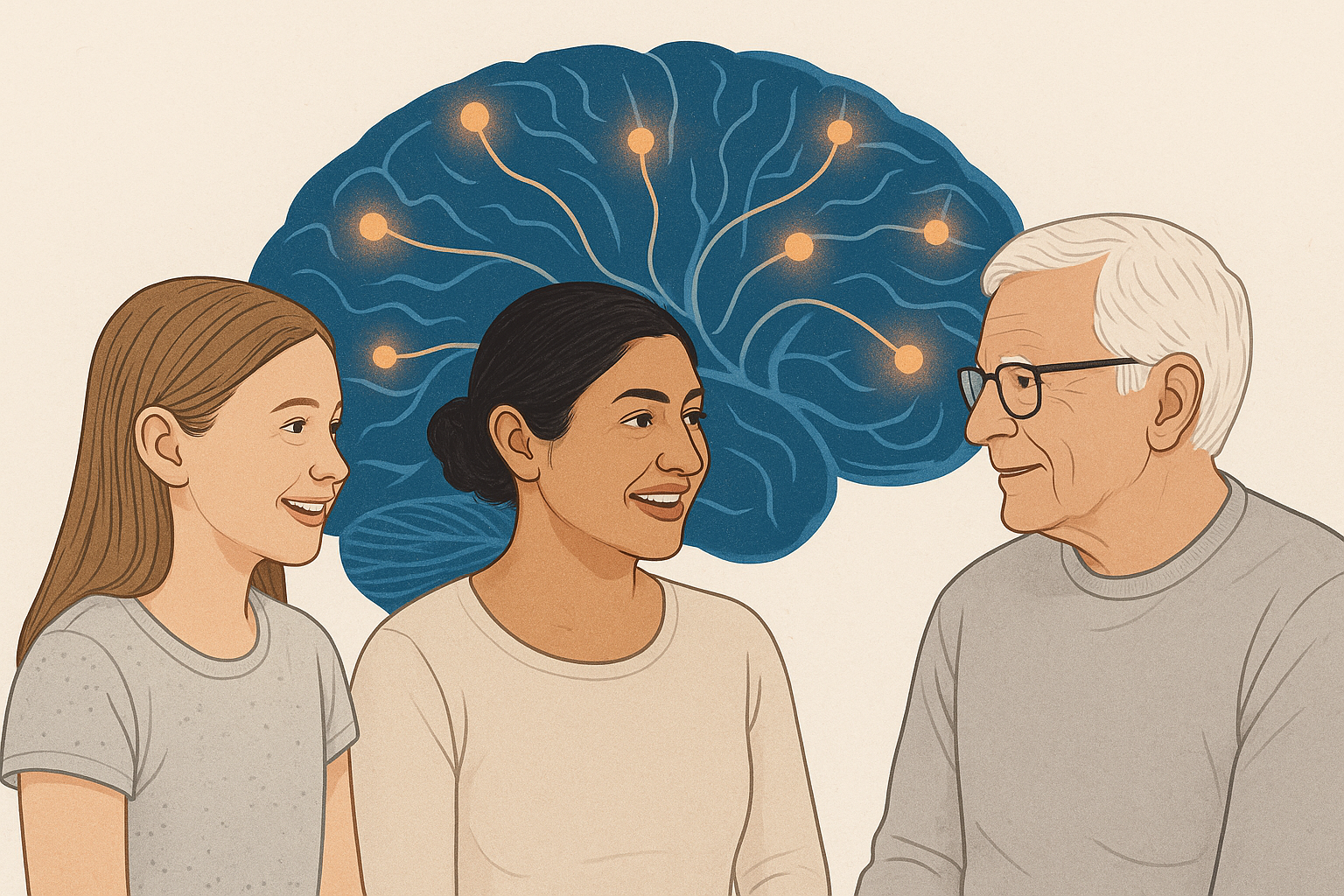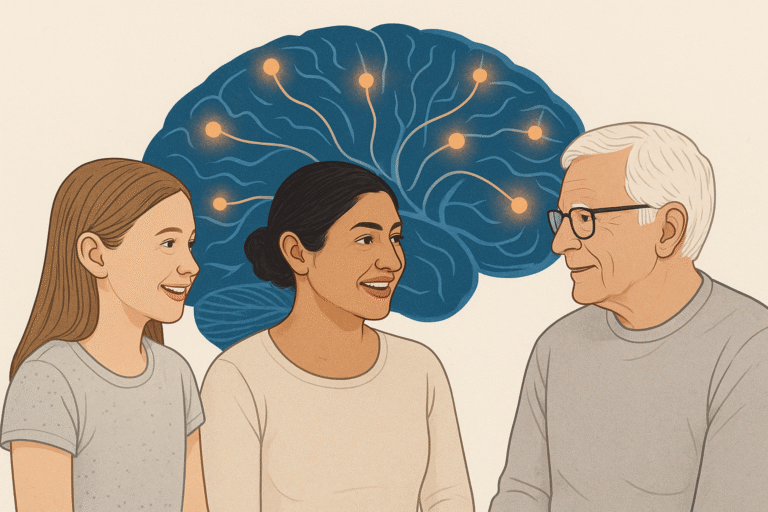Understanding Neuroplasticity: The Brain’s Ability to Adapt
Neuroplasticity refers to the brain’s remarkable ability to reorganize itself by forming new neural connections throughout life. This adaptability allows the brain to compensate for injury, disease, and to adjust in response to new situations or changes in the environment. In the context of language therapy, neuroplasticity is the foundational principle that enables individuals to improve or regain communication skills, regardless of age.
Language Therapy Across the Lifespan
Contrary to the long-held belief that language acquisition is limited to early childhood, contemporary research underscores that language therapy can be effective at any stage of life. While children benefit from heightened neuroplasticity, adults also possess the capacity for significant neural adaptation. This means that individuals can enhance their language abilities, whether they’re learning a new language, recovering from a stroke, or addressing speech disorders.
Children and Adolescents
In younger individuals, the brain’s plasticity is at its peak, making early intervention in speech and language disorders highly effective. Therapy during this period can lead to substantial improvements in communication skills, setting a strong foundation for future learning and social interaction.
Adults and Seniors
Adults may face language challenges due to various factors such as neurological conditions, trauma, or age-related decline. Language therapy leverages neuroplasticity to help adults rewire their brains, facilitating the recovery or enhancement of language functions. Techniques are tailored to individual needs, focusing on practical communication skills relevant to daily life.
Innovative Approaches in Modern Language Therapy
Modern language therapy incorporates a range of innovative strategies to stimulate neuroplasticity:
– Task-Specific Training: Engaging in activities that directly target language skills encourages the brain to form and strengthen relevant neural pathways.
– Repetition and Intensity: Consistent and intensive practice reinforces learning and aids in the retention of new language abilities.
– Multisensory Engagement: Utilizing visual, auditory, and kinesthetic inputs can enhance the learning experience and promote neural connections.
– Technology Integration: Tools such as speech therapy apps and virtual reality environments provide interactive platforms for practicing language skills.
The Role of Speech-Language Pathologists (SLPs)
SLPs are trained professionals who assess, diagnose, and treat communication disorders. They develop personalized therapy plans that consider an individual’s unique challenges and goals. By applying evidence-based techniques, SLPs guide clients through exercises and activities designed to harness neuroplasticity, facilitating meaningful improvements in language function.
Embracing Lifelong Learning and Communication
The concept of neuroplasticity empowers individuals to pursue language development and recovery at any age. Whether it’s a child overcoming a speech delay, an adult refining communication skills, or a senior recovering from a neurological event, language therapy offers a pathway to improved interaction and quality of life. Embracing the brain’s capacity for change opens doors to continuous learning and connection.
For those seeking professional support in language therapy, TalkIncSLP provides comprehensive services tailored to clients across the lifespan. Their team of dedicated SLPs utilizes the latest research and techniques to facilitate effective communication and empower individuals on their journey toward improved language skills.



